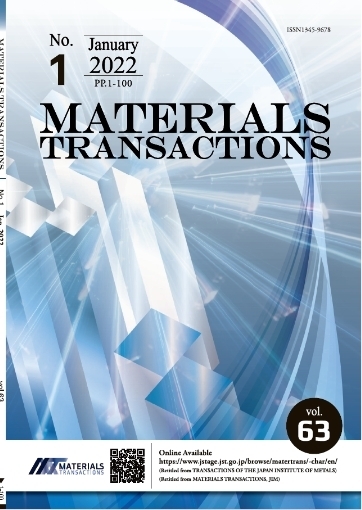Effect of Doping for Epitaxial (Ba1−xYbx)(Fe0.2Zr0.8)O3−δ Thin Films with Yb
Ryoichi Shinoda, Norie Hirao, Yuji Baba, Akihiro Iwase, Toshiyuki Matsui
pp. 1521-1524
抄録
We fabricated epitaxial (Ba1−xYbx)(Fe0.2Zr0.8)O3−δ (BYFZO) thin films and studied their structural and dielectric properties using synchrotron X-ray photoelectron spectroscopy. The 10%-Yb-substituted BYFZO samples had almost the same good insulation properties as the non-doped BFZO samples. Saturation magnetization occurred at 0.242 µB/f.u. It is believed that a large amount of Yb3+ substitution produced carrier electrons, leading to recombination of the charge balance. This resulted in an increase in the leakage current and a decrease in the saturation magnetization. The ferromagnetic nature of the x = 0.0 and x = 0.1 samples was believed to have super-exchange interactions because the samples showed good dielectric properties. Additionally, for the x = 0.1 samples, the magnetic moments of the Yb3+ ions added to the magnetization. Therefore, the maximum saturation magnetization occurred when the amount of Yb-substitution was x = 0.1.










